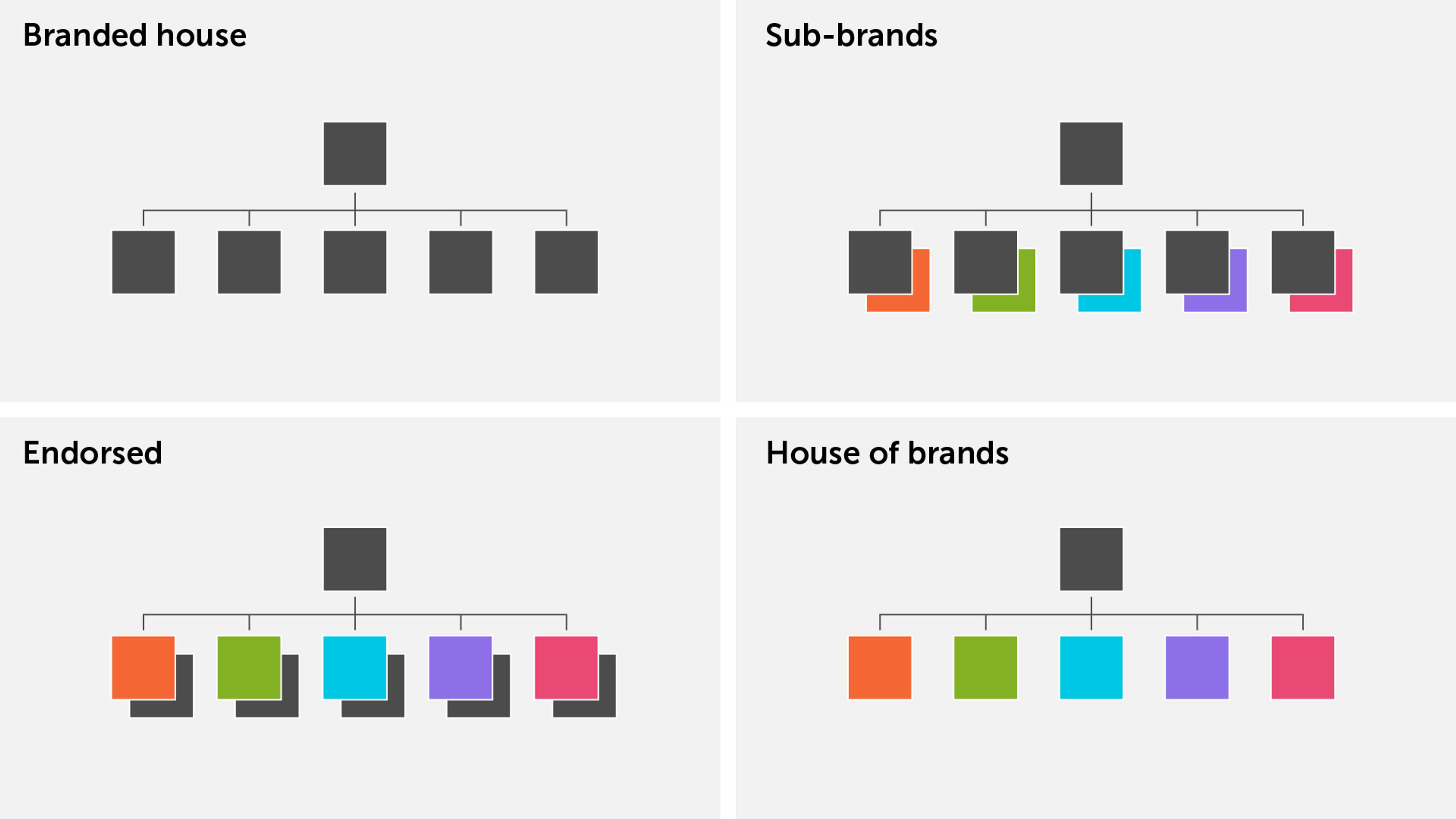14.08.25
Brand 101: Brand Architecture
Section 1.
What is brand architecture?
The term ‘Brand architecture’ refers to the structural relationship between the branded components of your business; like business sites, products, services, specialist teams, etc. and the hierarchy within which they should sit.
Any business that manages more than one brand as part of its portfolio technically has a ‘brand architecture’.

Section 2.
The benefits of brand architecture.
The right brand architecture will help you
Reduce confusion: Increase the clarity of your offer to your customers.
Increase brand loyalty: Allows your separately branded entities to benefit from a shared name.
Brand presence: Increase the equity of your brand.
A sense of unity: Help you create a sense of family, coherent direction and strong workplace culture.
Section 3.
Brand Models.
Brand models are different set structures that offer different kinds of relationships between these branded entities. There are some stalwart models that most businesses today follow.

Branded house: Under this model, all components are organised around a single parent brand.
Sub-Brands: This is when the individual brands are distinct, but still clearly relate to a parent brand.
Endorsed Brands: Brands and products are endorsed and supported by a parent brand.
House of brands: Individual brands stand alone, not connected to a parent brand.
Section 4.
How do I know which model is right for me?
Where to begin? The brand model you choose should enable your commercial vision. If there is merit in presenting one unified and connected whole—go for the branded house model. If there is more upside in presenting a choice of different brands, then you should consider using one of the other models.
This is a simplification. The actual decision of which brand model to select is complex, and there are a number of questions to ask (too many to identify in this starter article). But rest assured, every company, organisation or entity has an optimal solution.
